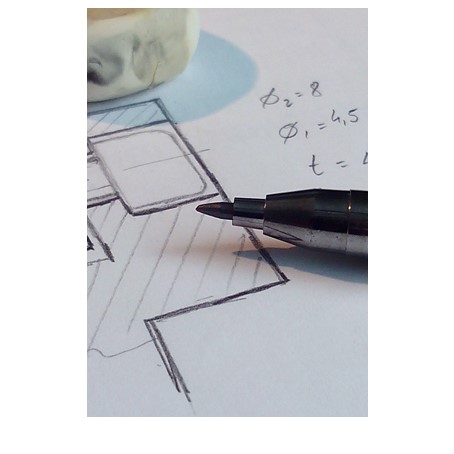Mensaje de error
- Notice: Trying to get property of non-object en menu_parent_ctools_access_check() (línea 64 de sites/all/modules/custom/euss_custom_ctools/plugins/access/menu_parent.inc).
- Notice: Trying to get property of non-object en menu_parent_ctools_access_check() (línea 64 de sites/all/modules/custom/euss_custom_ctools/plugins/access/menu_parent.inc).
- Inicio
- ICT and graphic expression
Share
Research description
This research aims to analyse whether the regular use of rendering technologies (RT) modifies the cognitive skills for interpreting graphics and creating draws who use them. Note: RT are those that facilitate the representation, understanding and creation of three-dimensional objects and synthetic environments. The group is studying the newly enrolled students of engineering degrees just before starting the study of the subject graphic expression of the first year. The choice of this group is given by the age of its participants: theoretically, have lived all the years of his life surrounded by computers. Does growing up surrounded by technology that helps us in graphics makes us more or less competent in that discipline?
Current projects
Researcher EUSS
Sr. Joan Yebras, Dr. Ulises Diego

Recent publications
- J. Yebras, “Microstation-2D”, Ediciones Gestión 2000 (2002)
- J. Yebras, “Expressió Gràfica en l’enginyeria”, Editorial UOC (2018)
- J. Yebras, A. Genís, “Microstation’95-2D”, Ediciones Gestión 2000 (1996)
Other relevant references in the field:
- “Can Serious Games Contribute to Developing and Sustaining 21st Century Skills?”, Romero, M., Usart, M., & Ott, M. Games and Culture, 10(2), 148–177. doi:10.1177/1555412014548919(2014).
- Explaining “I can”t draw’: Parallels between the structure and development of language and drawing, Cohn, N, Human Development, 55, 167–192 (2012)
- “A Paradigm for Promoting Visual Synthesis through Freehand Sketching”, Lane, D., Seery, N., & Gordon, S, Design and Technology Education, 15, 68–90 (2010)
- “Examining the spatial ability phenomenon from the student’s perspective”, Purdue University, Mohler, J. L. (2006).
Collaborations
- Universitat Oberta de Catalunya. eLearn Center, UOC
- Laval University Department of Teaching and Learning Studies, Québec, Canada (Sra. Margarida Romero)


